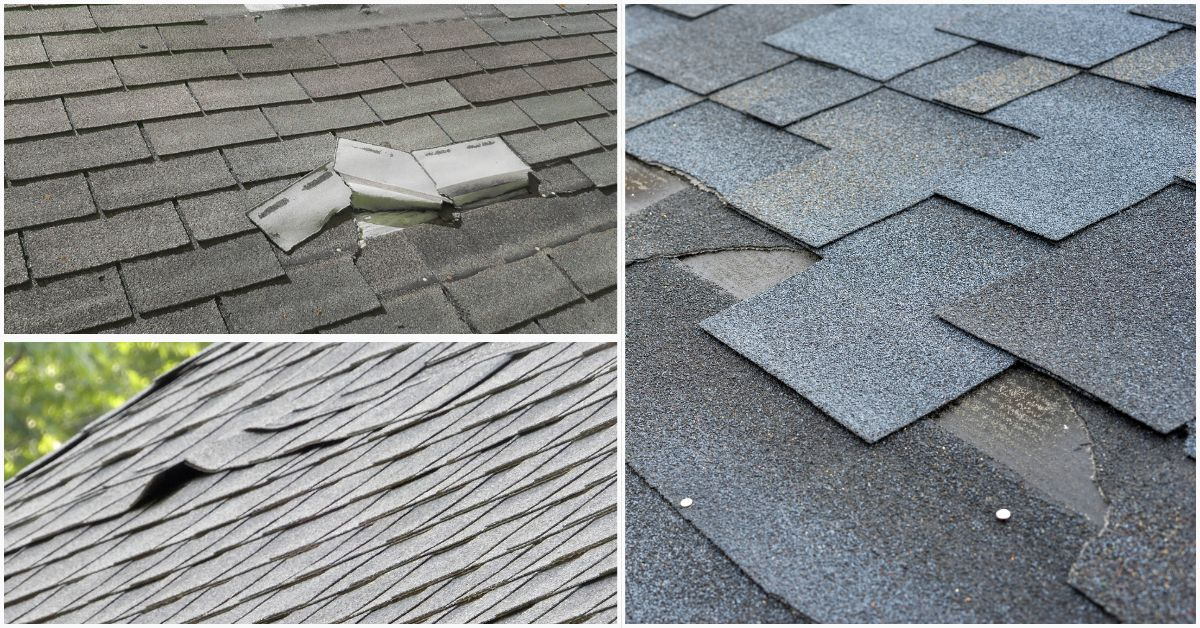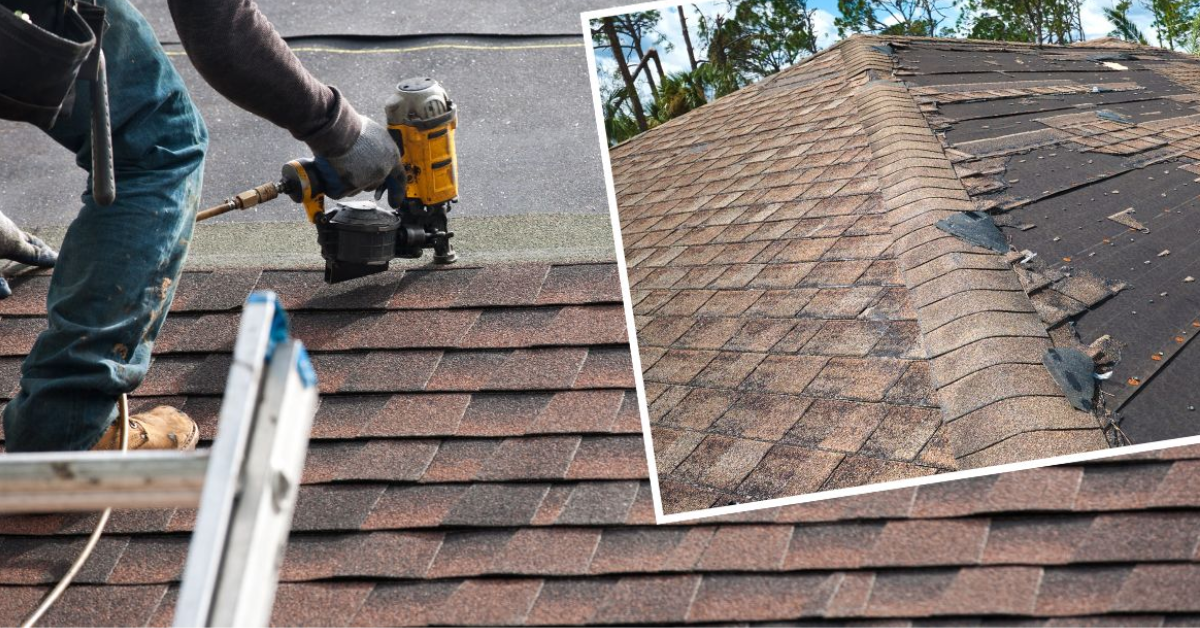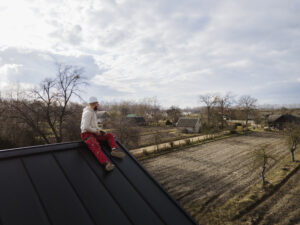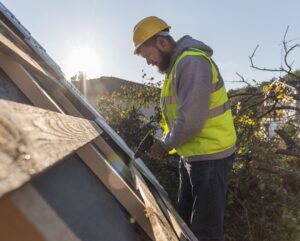Repair vs. Replacement: When a New Roof is the Best Choice

When it comes to home improvements, your roof isn’t exactly the brightest spot. But don’t ignore it because this quiet protector above your head is crucial for keeping you warm, dry, and out of debt. Your roof, more than just a structure, is a shield against the elements, a guardian of your home’s integrity. When should you repair something, and when should you consider replacing it with a new roof? Please put on your hard hat, and let’s look at the world of shingles, leaks, and hard choices.
The Big Question: Should You Fix It or Replace It?
Before we dive into the nitty-gritty, let’s talk numbers. After all, your wallet is probably already sweating at the thought of roof work.
Repairs are like a quick coffee date: relatively cheap and straightforward. Most repairs fall between $300 and $1,000, with the average ranging from $392 to $1,913. However, extensive repairs might flirt with the $3,000 mark or beyond, depending on the damage and materials used.
Replacements, on the other hand, are more like a long-term commitment. They’ll set you back anywhere from $5,000 to $10,000 on average, with some high-maintenance roofs demanding up to $16,000 or more. The final bill depends on factors like size, material, and how much your roofer enjoys caviar.
When to Stick a Band-Aid on It
Repairs are your best bet when:
- The damage is minor (think small leaks or a few missing shingles)
- Your roof is still in its prime years
- The issue is localized and not spreading faster than gossip in a small town
When to Go All-In on a New Roof
Replacement becomes the smart choice when:
- The damage is extensive or affects the roof’s structural integrity
- Your roof is older than most of your appliances
- You’re on a first-name basis with your repair guy due to frequent visits
Key Signs It's Time to Replace Your Roof
Now that we’ve covered the basics, let’s dive into the telltale signs that your roof is crying out for a complete makeover.
Water Damage & Leaks: When Your Roof Becomes a Colander
Water damage is like a bad houseguest – it overstays its welcome and leaves a mess behind. Here’s what to look out for:
- Persistent leaks: If your roof keeps springing leaks faster than you can patch them, it’s time to consider a full replacement.
- Water stains: Those unsightly brown spots on your ceiling aren’t modern art – they’re a sign of ongoing water intrusion. Left unchecked, they can lead to mold and structural damage faster than you can say “mushroom farm.”
Pro tip: Don’t wait until you need an ark. Regular inspections can catch water damage before it turns your attic into an indoor swimming pool.
Increased Energy Bills: When Your Roof Becomes a Money Pit
Is your energy bill higher than a cat on catnip? Your roof might be the culprit. Here’s why:
- Poor insulation: An aging or damaged roof can compromise your home’s insulation, forcing your HVAC system to work overtime.
- Temperature fluctuations: If your indoor temperature is swinging more wildly than a pendulum, your roof might be failing to regulate heat properly.
Did you know? A new, energy-efficient roof can potentially save you up to 15% on your home energy costs. That’s more money for pizza and Netflix!
Storm & Hurricane Damage: When Mother Nature Throws a Tantrum
Sometimes, Mother Nature decides to redecorate your roof – without your permission. After severe weather, look out for:
- Missing or curled shingles: If your roof looks like it’s been through a bad haircut after a storm, it might be time for a full replacement.
- Extensive damage: High winds, hail, and flying debris can wreak havoc on your roof, especially if it’s already showing signs of age.
Remember: While it’s tempting to channel your inner superhero and inspect the roof yourself after a storm, leave it to the professionals. Your safety is worth more than a few saved bucks.
Age & Wear: When Your Roof Enters Its Golden Years
Like fine wine, some things get better with age. Your roof, unfortunately, isn’t one of them. Keep an eye out for:
- Visible wear: Sagging, cracked, or missing shingles are your roof’s way of waving a white flag.
- Granules in the gutter: If your gutters are collecting more granules than a bird feeder, your shingles are deteriorating.
The age factor: Most roofs have a lifespan of 20-30 years for asphalt shingles, or longer for premium materials. If your roof is approaching retirement age, replacement is often more cost-effective than constant repairs.

Making the Right Choice: Factors to Consider
Deciding between repair and replacement isn’t always straightforward. Here are some additional factors to weigh:
- Material matters: While asphalt shingles are the most common and affordable option, premium materials like metal, clay, or slate offer longer lifespans and better durability. They come with a heftier price tag, but could save you money in the long run.
- Professional inspection: Don’t trust your gut (or your untrained eye) when it comes to roof decisions. Regular inspections by a qualified roofer can help identify issues early and guide your decision-making process.
- Seasonal considerations: Believe it or not, the time of year can affect your roof project. Labor costs and material availability can fluctuate with the seasons, potentially impacting your bottom line.
- Long-term plans: If you’re planning to sell your home in the near future, a new roof can be a major selling point. On the flip side, if you’re in it for the long haul, investing in a high-quality replacement might be the way to go.

Wrapping Up: The Roof, The Whole Roof, and Nothing But The Roof
Deciding between repairing and replacing your roof isn’t always a clear-cut choice. It requires careful consideration of costs, damage extent, and long-term benefits. While repairs might seem like the budget-friendly option in the short term, sometimes biting the bullet and opting for a full replacement is the smarter financial decision.
Remember, your roof is more than just the cherry on top of your home – it’s a crucial component of your property’s structure, value, and energy efficiency. By staying vigilant for signs of damage and age, and making informed decisions about repairs versus replacement, you can ensure that your home remains safe, dry, and energy-efficient for years to come.
So, the next time you look up at your roof, give it a nod of appreciation. And maybe, just maybe, start a roof replacement fund. Your future self (and your dry, cozy home) will thank you.
Recent Post

Roof Replacement Tampa: Your Complete Guide to a Secure Home

St. Petersburg, FL Roofing: Your Expert Guide






